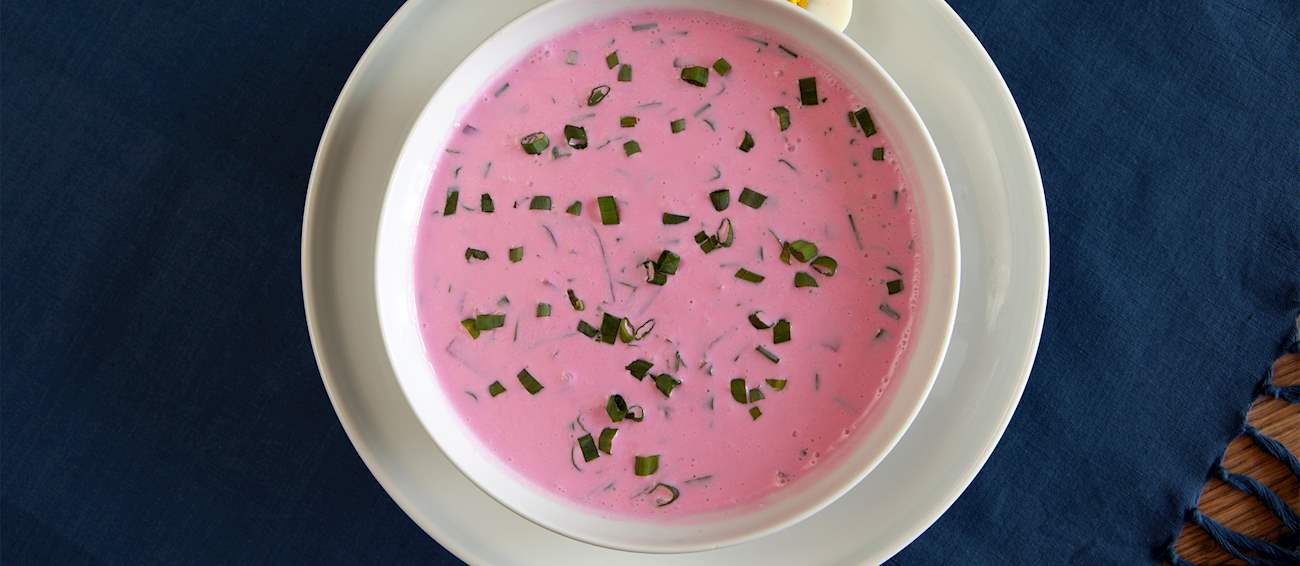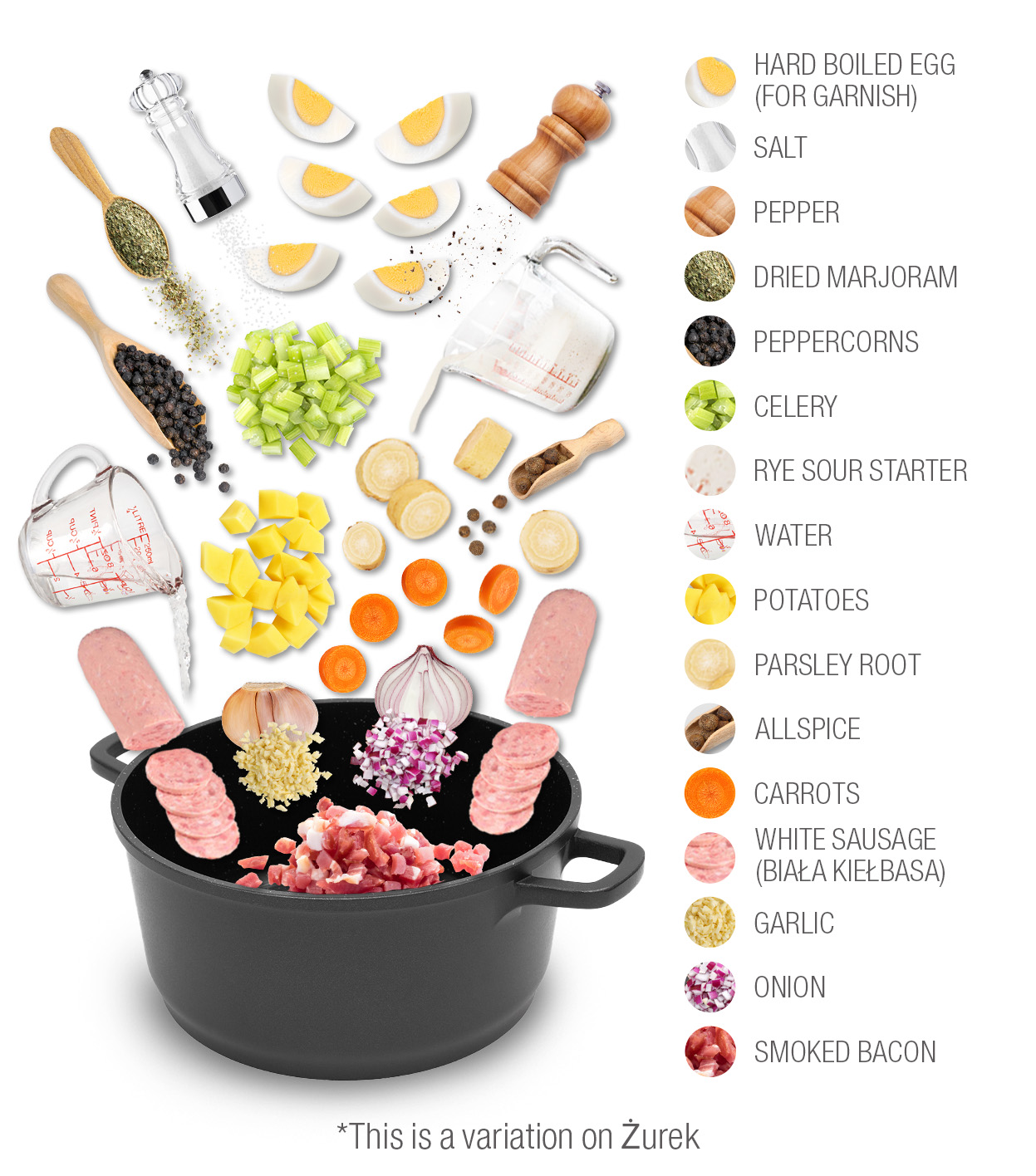MAIN INGREDIENTS
Żurek is a traditional soup characterized by its distinctively sour taste, which comes from sour leavening, or the fermentation of bread and rye flour. The soup also contains meats such as sausages, bacon, or ham, and vegetables such as potatoes and mushrooms.
Although it is extremely popular throughout Poland, each region has its own version of the dish. It is sometimes served in an edible bowl made of bread, when it is common to add halves of hard-boiled eggs on top of the soup as garnish. Żurek is traditionally prepared and consumed during Easter.
MAIN INGREDIENTS
Khaladnik is a cold beet soup that has been a staple of Belarusian cuisine since the late 18th century. It is made with boiled beets mixed with kefir, cucumbers, spring onions, and dill. The soup is traditionally served with a dollop of sour cream, a sprinkle of chopped dill, and often a hard-boiled egg on top.
This refreshing summer favorite has a distinctive pink color and a fresh, sour taste that is perfectly contrasted by a side of boiled potatoes.
Poliŭka is the general term for traditional soups in Belarus. The word soup was only borrowed by the country's nobility from the Germans around the 18th century, even though local recipes had been documented much earlier. Historically, a classic poliŭka would be made with fish (or mushrooms, during Lent), simmered in a broth with either barley or millet, kvass (fermented rye beverage), beet juice, or buttermilk.
Nowadays, the recipe usually centers around different varieties of mushrooms that are simmered with potatoes, onions, carrots, fennel, and (optionally) squash or tomato purée. The soup is usually garnished with fresh dill and sour cream before serving.
TasteAtlas food rankings are based on the ratings of the TasteAtlas audience, with a series of mechanisms that recognize real users and that ignore bot, nationalist or local patriotic ratings, and give additional value to the ratings of users that the system recognizes as knowledgeable. TasteAtlas Rankings should not be seen as the final global conclusion about food. Their purpose is to promote excellent local foods, instill pride in traditional dishes, and arouse curiosity about dishes you haven’t tried.













